
Sorting through my hard drives. Don't think I posted these, along with hundreds more pictures too.
Anyway on this day back when I had a Crown Victoria (Crown Victoria nerds/geeks/gearheads/petrolheads may see the pics below) I stopped by this elite car dealership. It was a slow day and I noticed these brand new vans were parked outside see below ->>
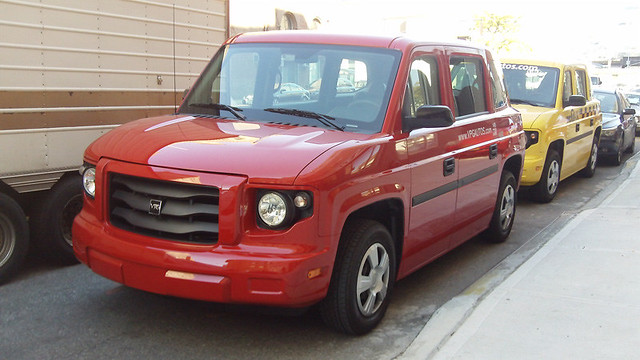
These vans are specially made for wheelchair users. They are also very unique as they are they're own car company. These cars aren't Ford, they aren't Chevy. They aren't Dodge, but they are an American company, and they are built in America.
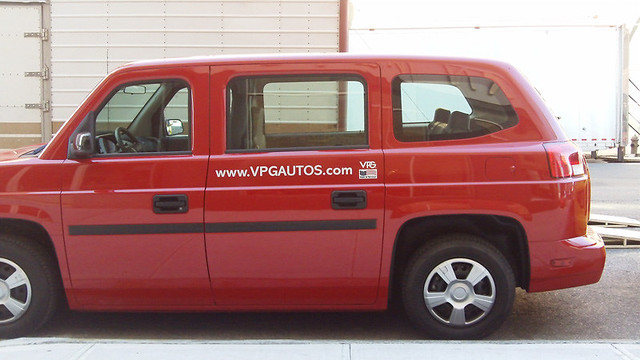
The engine inside is a Ford V-8 I believe, and it uses a standard old fashioned heavy-duty truck like body on frame construction. So the engine and the construction and durability of the vehicle are similar to the old Ford Crown Victoria.
For the van's passenger room, and built to purpose design, it is an approved for use vehicle for New York City taxicabs. One owner/driver has already purchased one, but it seems nobody else has followed suit. We have a limited amount of time to get a large variety of vehicles hacked up for use as a New York taxicab. Once the Nissan NV200 becomes available to the U.S. market, we won't have a choice anymore, and slowly over the course of the next 3 years, every taxicab will become a nissan van. I'm not sure if these vans are an exception to that rule, due to their ability to serve wheelchair customers.
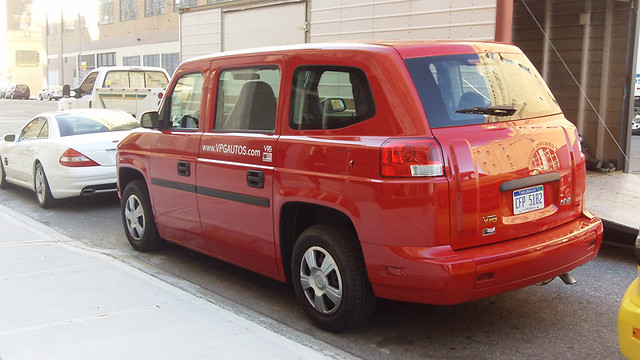
You'll notice that these cars look like an American take on the famous London taxicab, I do not think that is a mere coincidence. The taxicab market is huge, if you can gain a reputation as the superior car for such a trade, you can make a ton of money.
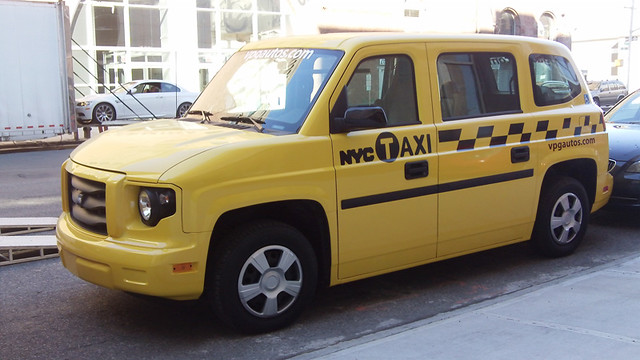
However, the car is expensive, at a cost of around $50,000. Currently a Ford Focus C-Max Hybrid is also approved as a taxicab, and that vehicle comparatively costs under $30,000. also, the C-max gets 3x better fuel economy..
It's no wonder there is only one of these vehicles in use as a taxicab here. But hey, if you really want to lose money, this was also for sale at the dealership ->

Ooooh La la.
And there was my cab, parked across the street. At the time it had 30,000 miles, or maybe 60,000, which meant it still had that new car smell. And it also had a leaky windshield, and some previous damage to the frame, so it didn't turn quite right.
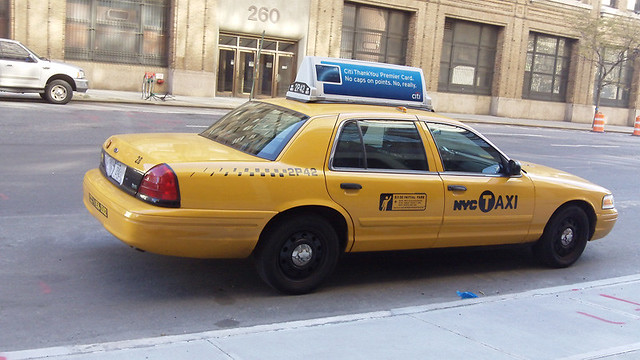

And here was a nice combination of shapes and light, near the Jacob Javits Convention Center, in the northern part of Chelsea.
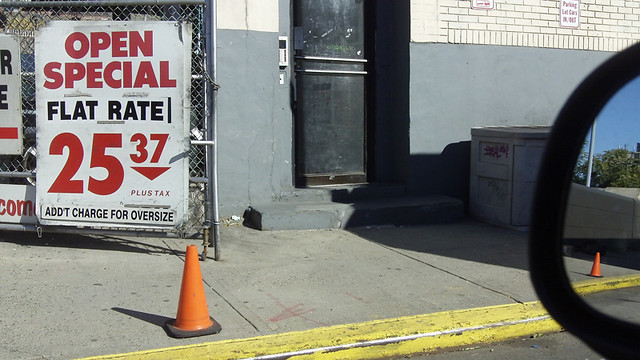

3 comments:
What are the legal requirements for a taxi cab? Aside from the obvious (attaching the taxi cab signs and the meter), what are the fixes that have to be done? I'm curious!
Well, the cars don't just need a meter. For the driver's protection the taxicabs either need a partition (that's the dividing wall between the front seats and the back seats, with bullet proof plexiglass sliding window) or they can just have a camera that records each passenger.
each cab also needs to have a tv screen installed with a gps computer to deliver advertising, tv programs, news, and do credit card transactions.
I think it costs an extra $3,000 maybe for the partition, and an extra $5,000 for the computer system.
The seats in the back need to either be made of vinyl or leather, or they need to be covered with a vinyl seat cover approved by the commission.
In addition the car purchased needs to be on the approved list of selected vehicles for use as a taxicab in New york city. Only these vehicles can be used.. http://www.nyc.gov/html/tlc/html/industry/taxicab_vehicles_in_use.shtml
The original idea was that each car has to have enough legroom for the passengers. also it is not allowed to have too much power in the engine.
At a later point in 2012 I got a picture of one of these being used for transportation companies with partial government subsidies to carry disabled people who qualify.
http://flic.kr/p/cwvti7
Since this is a different line of work in companies that tend to pay for their own gas, or have the government pay for it, the fuel efficiency is less of an issue. And perhaps with more of these on the road, they can start to take the busses out of service. So for a car, they are not very fuel efficient, but compared to a small bus, they are much better.
Post a Comment